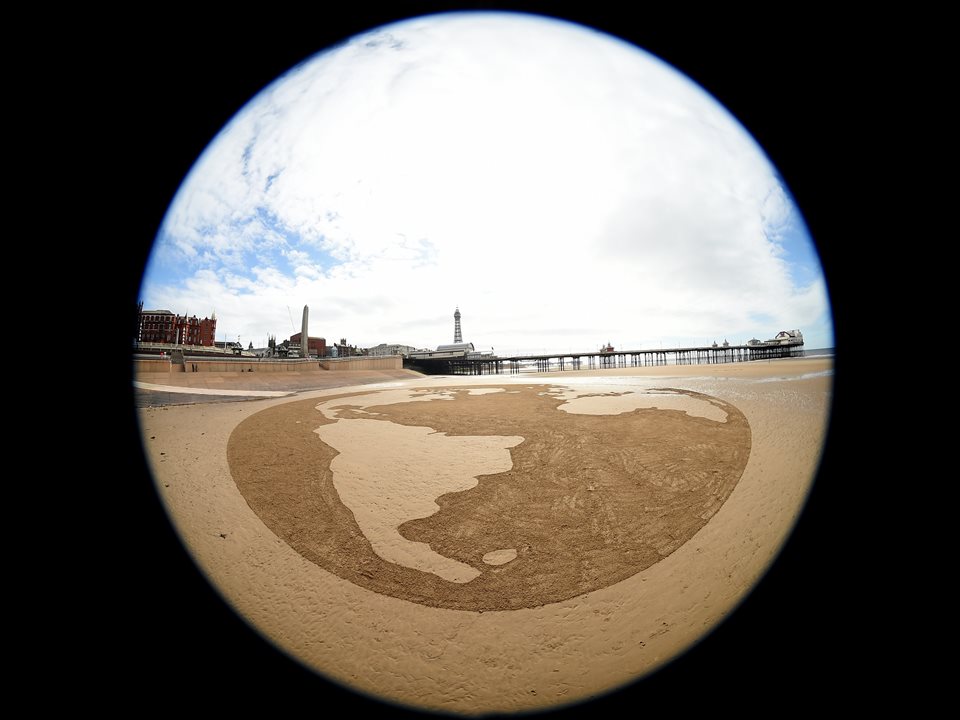
SEA LIFE Showcases Giant Sand Art to Launch Attraction Feature!
3 April 2019
by Visit Blackpool
A 150-foot wide planet Earth carved into the sand on Blackpool beach to reflect the fragility of the oceans’ eco-systems is being used to launch a new £100,000 conservation feature at SEA LIFE Blackpool.
Clearly visible from the top of the Tower, the large-scale artwork took a team of five sand artists nearly six hours to create, with every country, continent and corner of the globe painstakingly captured.
Matthew Titherington, general manager at SEA LIFE Blackpool, said: “We wanted to really make a big statement about the precarious state of the world’s oceans and marine life today.
“Our new ‘Four Corners of the World’ area, which features rare and unusual sea creatures from all over the globe, will help people to better understand the vulnerable state of marine life and the clear and present danger it faces.”
Part of the popular seafront aquarium’s ‘breed, rescue, protect’ campaign, it spotlights the threats championed by TV environmentalist Sir David Attenborough on his landmark Blue Planet II series. These include plastic pollution, overfishing and habitat destruction, which are leaving many species endangered or even close to extinction. Spin-off shows Blue Planet Live and Blue Planet UK are currently airing on BBC One to promote marine conservation and reduce plastic consumption.
The new showcase highlights the importance of reefs and wrecks in creating and sustaining rich marine eco-systems. It features replica reefs to explain their importance to the ocean’s delicate eco-systems and the many marine species, which call reefs and wrecks their home, as they provide shelter and a variety of life, helping to feed and sustain the various creatures.
It includes recreated partial shipwrecks and man-made marine eco-systems from across the world. Asia, Africa, Europe and America are represented with famous landmarks from each continent, such as the Terracotta Warriors. Visitors will also find information on the many local wrecks off the Fylde Coast, including Nelson’s then flagship HMS Foudroyant, which famously ran aground and was wrecked in a hurricane-force storm in 1897.
It spotlights rare, unusual and colourful species, such as dwarf lionfish, brittle stars, spider crabs, tropical anemones and cushion stars as well as mandarin fish, zebra moray eels, bioluminescent flashlight fish and blood shrimps.
“We’re really looking forward to seeing the faces of our first guests. It’s interactive and educational, with special viewing bubbles, helping people to understand more about these important aspects of marine life and the massive bio-diversity they support,” added Matthew Titherington.
“It’s a completely new feature and represents a major investment. Blackpool will be the first SEA LIFE anywhere in the world to host this remarkable display.”
SEA LIFE Blackpool, which has just seen the birth of the UK’s first shark pup twins and is the hub for all European blacktip reef breeding programmes, works closely with its charity partner, the Sea Life Trust, to develop and support ocean conservation projects worldwide, including threatened species, such as sharks, turtles and sea horses.